Best CV Format
Discover the best CV formats to use in 2024, tailored to different industries and job levels. Learn how to structure your CV for maximum impact and increase your chances of landing your dream job.
1000+ Reviews on Trustpilot
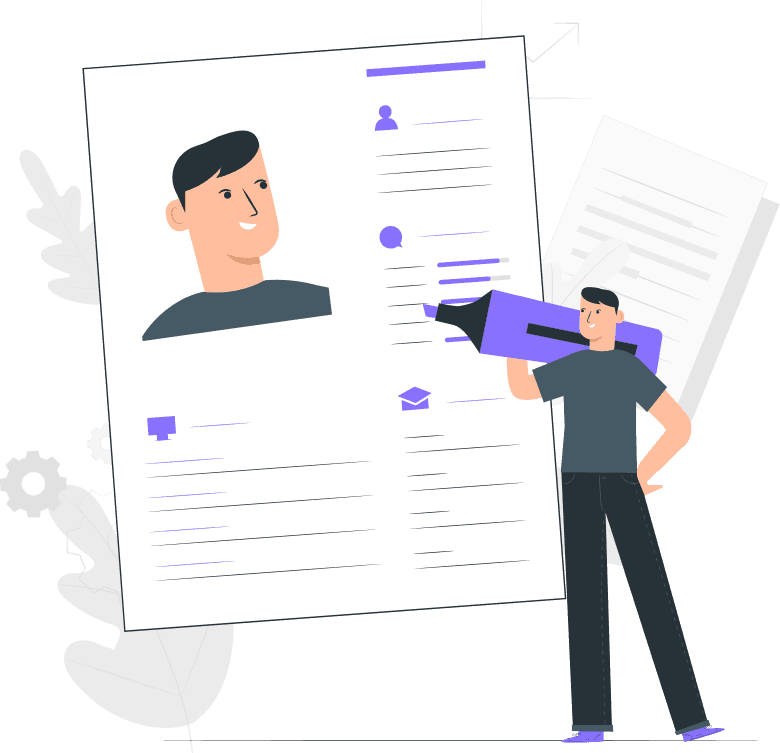
Best CV Format
Discover the best CV formats to use in 2024, tailored to different industries and job levels. Learn how to structure your CV for maximum impact and increase your chances of landing your dream job.
1000+ Reviews on Trustpilot

Best CV Format
Discover the best CV formats to use in 2024, tailored to different industries and job levels. Learn how to structure your CV for maximum impact and increase your chances of landing your dream job.
1000+ Reviews on Trustpilot


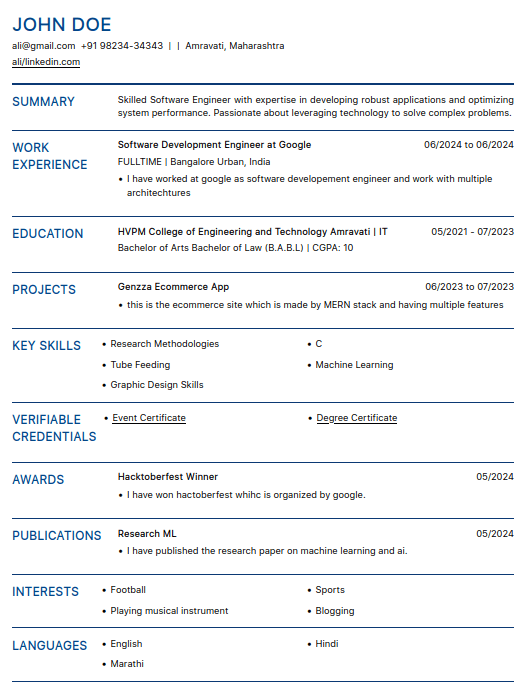
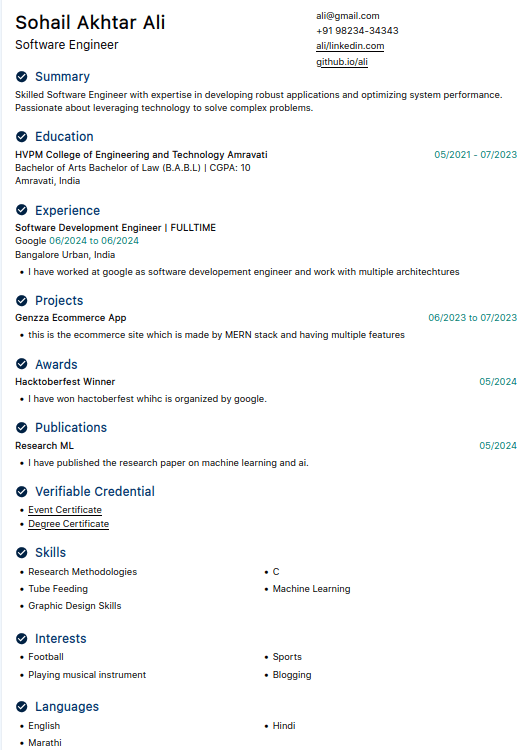
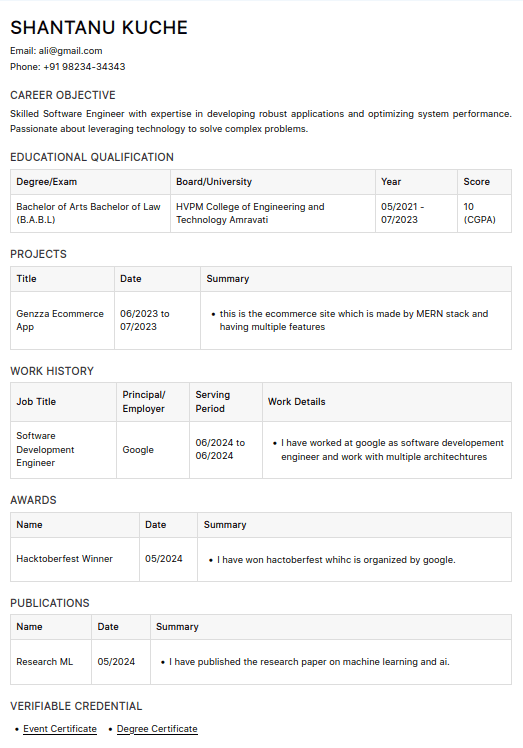
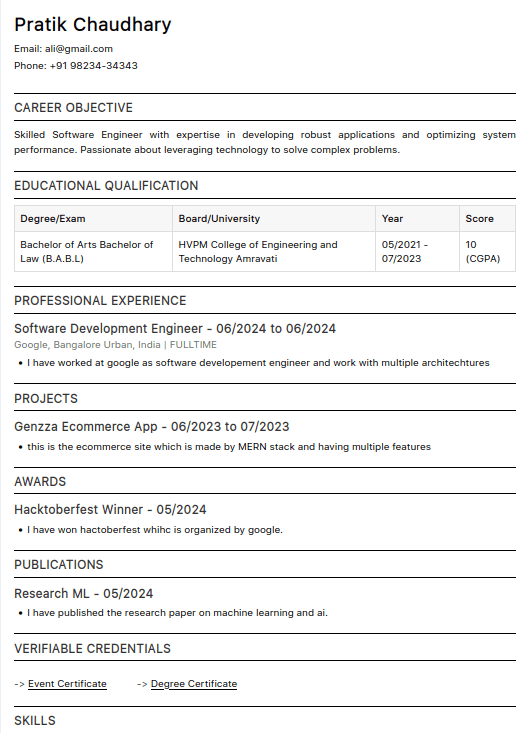
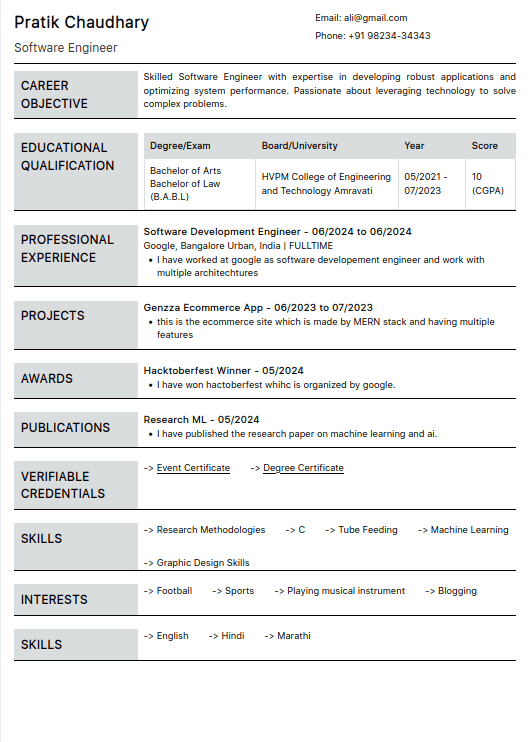












Your CV is often the first impression you make on a potential employer, and its format plays a crucial role in how your information is presented and perceived. Choosing the right CV format can significantly impact your chances of getting noticed, especially in a competitive job market.
In this article, we’ll explore the best CV formats for different career stages and industries, and provide tips on how to choose the one that best highlights your skills and experiences.
Your CV is often the first impression you make on a potential employer, and its format plays a crucial role in how your information is presented and perceived. Choosing the right CV format can significantly impact your chances of getting noticed, especially in a competitive job market.
In this article, we’ll explore the best CV formats for different career stages and industries, and provide tips on how to choose the one that best highlights your skills and experiences.
Your CV is often the first impression you make on a potential employer, and its format plays a crucial role in how your information is presented and perceived. Choosing the right CV format can significantly impact your chances of getting noticed, especially in a competitive job market.
In this article, we’ll explore the best CV formats for different career stages and industries, and provide tips on how to choose the one that best highlights your skills and experiences.
1. Chronological CV Format
Overview: The chronological CV format is the most traditional and widely used layout. It lists your work experience in reverse chronological order, starting with your most recent job and working backward. This format is ideal for individuals with a strong work history and a clear career progression.
Best For:
Professionals with consistent work experience.
Job seekers applying for roles in traditional industries (e.g., finance, law, education).
Candidates with minimal employment gaps.
Structure:
Personal Information
Professional Summary or Objective
Work Experience (listed from most recent to oldest)
Education
Skills
Certifications and Training
Volunteer Experience (optional)
Why It Works: Employers favor this format because it clearly demonstrates your career trajectory and stability. It’s easy to follow and highlights your most recent accomplishments first, which is often the most relevant information for hiring managers.
1. Chronological CV Format
Overview: The chronological CV format is the most traditional and widely used layout. It lists your work experience in reverse chronological order, starting with your most recent job and working backward. This format is ideal for individuals with a strong work history and a clear career progression.
Best For:
Professionals with consistent work experience.
Job seekers applying for roles in traditional industries (e.g., finance, law, education).
Candidates with minimal employment gaps.
Structure:
Personal Information
Professional Summary or Objective
Work Experience (listed from most recent to oldest)
Education
Skills
Certifications and Training
Volunteer Experience (optional)
Why It Works: Employers favor this format because it clearly demonstrates your career trajectory and stability. It’s easy to follow and highlights your most recent accomplishments first, which is often the most relevant information for hiring managers.
1. Chronological CV Format
Overview: The chronological CV format is the most traditional and widely used layout. It lists your work experience in reverse chronological order, starting with your most recent job and working backward. This format is ideal for individuals with a strong work history and a clear career progression.
Best For:
Professionals with consistent work experience.
Job seekers applying for roles in traditional industries (e.g., finance, law, education).
Candidates with minimal employment gaps.
Structure:
Personal Information
Professional Summary or Objective
Work Experience (listed from most recent to oldest)
Education
Skills
Certifications and Training
Volunteer Experience (optional)
Why It Works: Employers favor this format because it clearly demonstrates your career trajectory and stability. It’s easy to follow and highlights your most recent accomplishments first, which is often the most relevant information for hiring managers.
2. Functional CV Format
Overview: The functional CV format focuses on your skills and abilities rather than your chronological work history. It’s designed to highlight your qualifications that are most relevant to the job you’re applying for, making it ideal for those with less traditional career paths.
Best For:
Career changers looking to transition into a new industry.
Recent graduates with limited work experience.
Individuals with employment gaps or a diverse job history.
Structure:
Personal Information
Professional Summary or Objective
Key Skills (organized by theme or category)
Work Experience (briefly mentioned without dates or in a less prominent section)
Education
Certifications and Training
Volunteer Experience (optional)
2. Functional CV Format
Overview: The functional CV format focuses on your skills and abilities rather than your chronological work history. It’s designed to highlight your qualifications that are most relevant to the job you’re applying for, making it ideal for those with less traditional career paths.
Best For:
Career changers looking to transition into a new industry.
Recent graduates with limited work experience.
Individuals with employment gaps or a diverse job history.
Structure:
Personal Information
Professional Summary or Objective
Key Skills (organized by theme or category)
Work Experience (briefly mentioned without dates or in a less prominent section)
Education
Certifications and Training
Volunteer Experience (optional)
2. Functional CV Format
Overview: The functional CV format focuses on your skills and abilities rather than your chronological work history. It’s designed to highlight your qualifications that are most relevant to the job you’re applying for, making it ideal for those with less traditional career paths.
Best For:
Career changers looking to transition into a new industry.
Recent graduates with limited work experience.
Individuals with employment gaps or a diverse job history.
Structure:
Personal Information
Professional Summary or Objective
Key Skills (organized by theme or category)
Work Experience (briefly mentioned without dates or in a less prominent section)
Education
Certifications and Training
Volunteer Experience (optional)
3. Combination (Hybrid) CV Format
Overview: The combination CV format merges elements of both the chronological and functional formats. It highlights your key skills while also providing a chronological overview of your work experience. This format is versatile and can be adapted to fit various career situations.
Best For:
Mid-level professionals with diverse skills.
Job seekers who want to emphasize both skills and work experience.
Candidates applying for roles that require specific technical skills.
Structure:
Personal Information
Professional Summary or Objective
Key Skills (highlighted at the top)
Work Experience (listed in reverse chronological order)
Education
Certifications and Training
Volunteer Experience (optional)
Why It Works: The combination format allows you to showcase your relevant skills upfront while still providing a clear timeline of your career progression. This makes it a strong choice for candidates who have the experience but want to tailor their CV to match the specific job requirements.
3. Combination (Hybrid) CV Format
Overview: The combination CV format merges elements of both the chronological and functional formats. It highlights your key skills while also providing a chronological overview of your work experience. This format is versatile and can be adapted to fit various career situations.
Best For:
Mid-level professionals with diverse skills.
Job seekers who want to emphasize both skills and work experience.
Candidates applying for roles that require specific technical skills.
Structure:
Personal Information
Professional Summary or Objective
Key Skills (highlighted at the top)
Work Experience (listed in reverse chronological order)
Education
Certifications and Training
Volunteer Experience (optional)
Why It Works: The combination format allows you to showcase your relevant skills upfront while still providing a clear timeline of your career progression. This makes it a strong choice for candidates who have the experience but want to tailor their CV to match the specific job requirements.
3. Combination (Hybrid) CV Format
Overview: The combination CV format merges elements of both the chronological and functional formats. It highlights your key skills while also providing a chronological overview of your work experience. This format is versatile and can be adapted to fit various career situations.
Best For:
Mid-level professionals with diverse skills.
Job seekers who want to emphasize both skills and work experience.
Candidates applying for roles that require specific technical skills.
Structure:
Personal Information
Professional Summary or Objective
Key Skills (highlighted at the top)
Work Experience (listed in reverse chronological order)
Education
Certifications and Training
Volunteer Experience (optional)
Why It Works: The combination format allows you to showcase your relevant skills upfront while still providing a clear timeline of your career progression. This makes it a strong choice for candidates who have the experience but want to tailor their CV to match the specific job requirements.
4. Creative CV Format
Overview: The creative CV format breaks away from traditional layouts by incorporating design elements, infographics, and non-standard formatting. This type of CV is best suited for creative industries where visual presentation is crucial, such as graphic design, marketing, or advertising.
Best For:
Professionals in creative industries (e.g., graphic designers, photographers, marketers).
Job seekers applying for roles where design skills are essential.
Individuals who want to stand out with a visually appealing CV.
Structure:
Personal Information
Professional Summary or Objective
Portfolio or Samples of Work
Key Skills
Work Experience (briefly outlined)
Education
Certifications and Training
Volunteer Experience (optional)
4. Creative CV Format
Overview: The creative CV format breaks away from traditional layouts by incorporating design elements, infographics, and non-standard formatting. This type of CV is best suited for creative industries where visual presentation is crucial, such as graphic design, marketing, or advertising.
Best For:
Professionals in creative industries (e.g., graphic designers, photographers, marketers).
Job seekers applying for roles where design skills are essential.
Individuals who want to stand out with a visually appealing CV.
Structure:
Personal Information
Professional Summary or Objective
Portfolio or Samples of Work
Key Skills
Work Experience (briefly outlined)
Education
Certifications and Training
Volunteer Experience (optional)
4. Creative CV Format
Overview: The creative CV format breaks away from traditional layouts by incorporating design elements, infographics, and non-standard formatting. This type of CV is best suited for creative industries where visual presentation is crucial, such as graphic design, marketing, or advertising.
Best For:
Professionals in creative industries (e.g., graphic designers, photographers, marketers).
Job seekers applying for roles where design skills are essential.
Individuals who want to stand out with a visually appealing CV.
Structure:
Personal Information
Professional Summary or Objective
Portfolio or Samples of Work
Key Skills
Work Experience (briefly outlined)
Education
Certifications and Training
Volunteer Experience (optional)
5. Academic CV Format
Overview: The academic CV format is tailored for those pursuing careers in academia, research, or scientific fields. It’s typically more detailed than other formats, as it includes sections for publications, research, teaching experience, and academic achievements.
Best For:
Academics, researchers, and scientists.
Professionals applying for academic or research positions.
Candidates with extensive publications or presentations.
Structure:
Personal Information
Academic Summary or Objective
Education (detailed)
Research Experience
Teaching Experience
Publications and Presentations
Awards and Honors
Skills
Certifications and Training
Professional Memberships
References
5. Academic CV Format
Overview: The academic CV format is tailored for those pursuing careers in academia, research, or scientific fields. It’s typically more detailed than other formats, as it includes sections for publications, research, teaching experience, and academic achievements.
Best For:
Academics, researchers, and scientists.
Professionals applying for academic or research positions.
Candidates with extensive publications or presentations.
Structure:
Personal Information
Academic Summary or Objective
Education (detailed)
Research Experience
Teaching Experience
Publications and Presentations
Awards and Honors
Skills
Certifications and Training
Professional Memberships
References
5. Academic CV Format
Overview: The academic CV format is tailored for those pursuing careers in academia, research, or scientific fields. It’s typically more detailed than other formats, as it includes sections for publications, research, teaching experience, and academic achievements.
Best For:
Academics, researchers, and scientists.
Professionals applying for academic or research positions.
Candidates with extensive publications or presentations.
Structure:
Personal Information
Academic Summary or Objective
Education (detailed)
Research Experience
Teaching Experience
Publications and Presentations
Awards and Honors
Skills
Certifications and Training
Professional Memberships
References
Choosing the right CV format is essential for presenting your qualifications in the most effective way. Whether you’re a seasoned professional, a recent graduate, or a creative looking to showcase your portfolio, there’s a CV format that can help you stand out. Consider your career stage, industry, and the specific job you’re applying for when selecting your format.
By understanding the strengths of each CV format and tailoring your resume accordingly, you can increase your chances of making a lasting impression on potential employers and move closer to securing the job you desire. Remember, your CV is a reflection of your professional journey, so take the time to craft it with care.
Choosing the right CV format is essential for presenting your qualifications in the most effective way. Whether you’re a seasoned professional, a recent graduate, or a creative looking to showcase your portfolio, there’s a CV format that can help you stand out. Consider your career stage, industry, and the specific job you’re applying for when selecting your format.
By understanding the strengths of each CV format and tailoring your resume accordingly, you can increase your chances of making a lasting impression on potential employers and move closer to securing the job you desire. Remember, your CV is a reflection of your professional journey, so take the time to craft it with care.
Choosing the right CV format is essential for presenting your qualifications in the most effective way. Whether you’re a seasoned professional, a recent graduate, or a creative looking to showcase your portfolio, there’s a CV format that can help you stand out. Consider your career stage, industry, and the specific job you’re applying for when selecting your format.
By understanding the strengths of each CV format and tailoring your resume accordingly, you can increase your chances of making a lasting impression on potential employers and move closer to securing the job you desire. Remember, your CV is a reflection of your professional journey, so take the time to craft it with care.
CV Format FAQ
CV Format FAQ
CV Format FAQ
What is a Resume?
A resume is a formal document that provides an overview of your professional qualifications, including your work experience, education, skills, and achievements. It's typically used to apply for jobs, giving potential employers a snapshot of your background and suitability for a specific role. A well-crafted resume highlights your strengths and is often your first opportunity to make a strong impression.
What is a Resume?
A resume is a formal document that provides an overview of your professional qualifications, including your work experience, education, skills, and achievements. It's typically used to apply for jobs, giving potential employers a snapshot of your background and suitability for a specific role. A well-crafted resume highlights your strengths and is often your first opportunity to make a strong impression.
What is a Resume?
A resume is a formal document that provides an overview of your professional qualifications, including your work experience, education, skills, and achievements. It's typically used to apply for jobs, giving potential employers a snapshot of your background and suitability for a specific role. A well-crafted resume highlights your strengths and is often your first opportunity to make a strong impression.
How do i create my first resume?
A resume is a formal document that provides an overview of your professional qualifications, including your work experience, education, skills, and achievements. It's typically used to apply for jobs, giving potential employers a snapshot of your background and suitability for a specific role. A well-crafted resume highlights your strengths and is often your first opportunity to make a strong impression.
How do i create my first resume?
A resume is a formal document that provides an overview of your professional qualifications, including your work experience, education, skills, and achievements. It's typically used to apply for jobs, giving potential employers a snapshot of your background and suitability for a specific role. A well-crafted resume highlights your strengths and is often your first opportunity to make a strong impression.
How do i create my first resume?
A resume is a formal document that provides an overview of your professional qualifications, including your work experience, education, skills, and achievements. It's typically used to apply for jobs, giving potential employers a snapshot of your background and suitability for a specific role. A well-crafted resume highlights your strengths and is often your first opportunity to make a strong impression.
What should I include in my resume?
Your resume should include your contact information, a professional summary or objective, work experience, education, skills, and any relevant certifications or accomplishments. Tailoring your resume to the job you're applying for can increase your chances of standing out. 2. How long should my resume be?
What should I include in my resume?
Your resume should include your contact information, a professional summary or objective, work experience, education, skills, and any relevant certifications or accomplishments. Tailoring your resume to the job you're applying for can increase your chances of standing out. 2. How long should my resume be?
What should I include in my resume?
Your resume should include your contact information, a professional summary or objective, work experience, education, skills, and any relevant certifications or accomplishments. Tailoring your resume to the job you're applying for can increase your chances of standing out. 2. How long should my resume be?
Should I include a photo on my resume?
The answer is No. Including a photo on your resume is not recommended as it can distract the recruiter HR managers. Most of the companies use Applicant tracking system (ATS) to check the Resume. Graphics should possibly not be scanned by the ATS System. So, do not add any type of images in your resume.
Should I include a photo on my resume?
The answer is No. Including a photo on your resume is not recommended as it can distract the recruiter HR managers. Most of the companies use Applicant tracking system (ATS) to check the Resume. Graphics should possibly not be scanned by the ATS System. So, do not add any type of images in your resume.
Should I include a photo on my resume?
The answer is No. Including a photo on your resume is not recommended as it can distract the recruiter HR managers. Most of the companies use Applicant tracking system (ATS) to check the Resume. Graphics should possibly not be scanned by the ATS System. So, do not add any type of images in your resume.
What's the difference between a resume and a CV?
A resume is a informational document, typically one to two pages, that highlights your relevant work experience, skills, and education. A CV (Curriculum Vitae) is more detailed, often used for academic, research, or international positions, and includes a comprehensive overview of your professional history, publications, and other accomplishments.
What's the difference between a resume and a CV?
A resume is a informational document, typically one to two pages, that highlights your relevant work experience, skills, and education. A CV (Curriculum Vitae) is more detailed, often used for academic, research, or international positions, and includes a comprehensive overview of your professional history, publications, and other accomplishments.
What's the difference between a resume and a CV?
A resume is a informational document, typically one to two pages, that highlights your relevant work experience, skills, and education. A CV (Curriculum Vitae) is more detailed, often used for academic, research, or international positions, and includes a comprehensive overview of your professional history, publications, and other accomplishments.
How often should I update my resume?
You should update your resume regularly, especially after gaining new experience, skills, or certifications. It's a good practice to revisit and revise your resume every six months or whenever you're preparing to apply for a new job.
How often should I update my resume?
You should update your resume regularly, especially after gaining new experience, skills, or certifications. It's a good practice to revisit and revise your resume every six months or whenever you're preparing to apply for a new job.
How often should I update my resume?
You should update your resume regularly, especially after gaining new experience, skills, or certifications. It's a good practice to revisit and revise your resume every six months or whenever you're preparing to apply for a new job.
Build Your Resume
Truresume offers free Resume Templates to help you craft a professional resume quickly and easily.
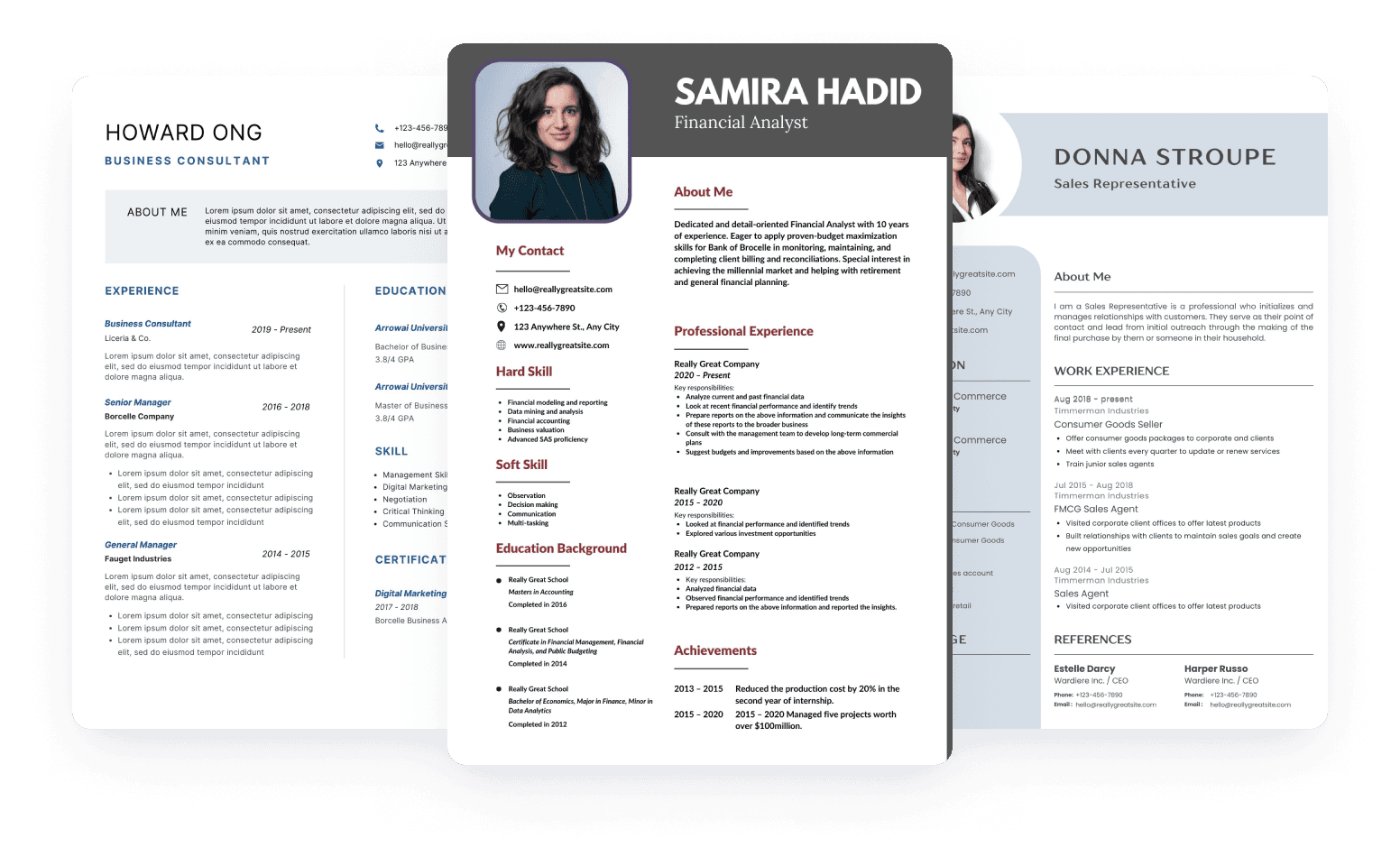
Build Your Resume
Truresume offers free Resume Templates to help you craft a professional resume quickly and easily.

Build Your Resume
Truresume offers free Resume Templates to help you craft a professional resume quickly and easily.

Our Featured Articles

resume
Best Resume Format for Freshers in 2025: Your Ultimate Guide to Getting Noticed
3 Jun 2025

ATS
Why TruResume ATS Friendly Resume Builder Tools Are Best for Resume Building
3 Jun 2025

Resume
Why ATS-Friendly Resumes Are Important to Pass Initial Screening
3 Jun 2025

Resume
What’s the Difference Between CV and Resume?
3 Jun 2025

Resume
How to Write a Resume for Freshers with No Experience
3 Jun 2025

Resume
What to Include or Not in Resume 2025 as a Fresher
3 Jun 2025
Our Featured Articles

resume
Best Resume Format for Freshers in 2025: Your Ultimate Guide to Getting Noticed
3 Jun 2025

ATS
Why TruResume ATS Friendly Resume Builder Tools Are Best for Resume Building
3 Jun 2025

Resume
Why ATS-Friendly Resumes Are Important to Pass Initial Screening
3 Jun 2025

Resume
What’s the Difference Between CV and Resume?
3 Jun 2025
Our Featured Articles

resume
Best Resume Format for Freshers in 2025: Your Ultimate Guide to Getting Noticed
3 Jun 2025

ATS
Why TruResume ATS Friendly Resume Builder Tools Are Best for Resume Building
3 Jun 2025

Resume
Why ATS-Friendly Resumes Are Important to Pass Initial Screening
3 Jun 2025

Resume
What’s the Difference Between CV and Resume?
3 Jun 2025